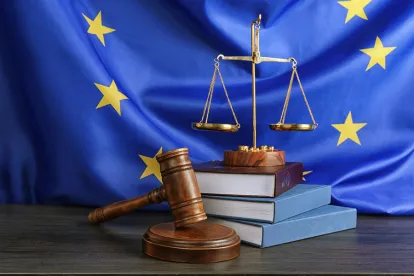On March 7, 2019, in the Court of Justice of the European Union (EU), the Eighth Chamber of the General Court issued two judgments in cases regarding access of confidential information related to glyphosate. One of these decisions (Tweedale v. EFSA, Case T-716/14) related to a 2014 request for two toxicity studies that were “key studies” in the determination of glyphosate’s acceptable daily intake (ADI). The second decision (Hautala et al. v. EFSA, Case T-329/17) related to a request from Members of the European Parliament for access to parts (i.e., “material, experimental conditions and methods” and “results and discussions”) of 12 unpublished carcinogenicity studies, described as the “‘most crucial’ studies for the peer review and [EFSA’s] conclusion that glyphosate is unlikely to pose carcinogenic hazard to humans.” Partial access to those studies (i.e., raw data and findings aggregated in tables and figures) had been granted in an earlier 2016 decision.
A prior November 21, 2018, case related to glyphosate (Stichting Greenpeace Nederland and Pesticide Action Network Europe v. European Commission, Case T-545/11 RENV) and the General Court/Fourth Chamber’s judgment to prevent applicants from receiving access to information on the degree of purity of the active substance glyphosate, as well as the identity and quantities of impurities is discussed here. In contrast to the Stichting decision, where access was denied, the court in the March 7, 2019, decisions annulled prior decisions dated October 16, 2017 and March 14, 2017, that refused access to the requested information.
Discussion
Article 4(2) of Regulation No. 1049/2001 (regarding public access to European Parliament, Council and Commission documents) provides that access to documents should be refused where disclosure would undermine, in part, commercial interests of a natural or legal person, including intellectual property, unless “there is an overriding public interest in disclosure.”
Article 6(1) of Regulation No. 1367/2006 (regarding the application of the provisions of the Aarhus Convention on Access to Information, Public Participation in Decision-making and Access to Justice in Environmental Matters to Community institutions and bodies) provides that, with regard to Regulation No. 1049/2001 Article 4(2), “an overriding public interest in disclosure shall be deemed to exist where the information requested relates to emissions into the environment.” Recital 15 of Regulation No. 1367/2006 also provides: “The grounds for refusal as regards access to environmental information should be interpreted in a restrictive way, taking into account the public interest served by disclosure and whether the information requested relates to emissions in the environment.”
Taken together, the court stated: “that means that an EU institution, hearing a request for access to a document, cannot justify its refusal to divulge it on the basis of the exception relating to the protection of the commercial interests of a particular natural or legal person for the purposes of Article 4(2), first indent, of Regulation No 1049/2001, where the information contained in that document constitutes information which ‘relates to emissions into the environment’ for the purposes of Article 6(1) of Regulation No 1367/2006.”
The General Court/Fourth Chamber thus addressed whether the information contained in the applicants’ requests constituted information which ‘relates to emissions into the environment’ for the purposes of Article 6(1) of Regulation 1367/2006.
In the March 7, 2019, decisions, the General Court/Fourth Chamber held that EFSA cannot argue that the requested studies do not concern actual emissions or the effects of actual emissions because “an active substance contained in plant protection products, such as glyphosate, in the course of normal use, is intended to be discharged into the environment by virtue of its function, and its foreseeable emissions cannot, therefore, be regarded as purely hypothetical.” The court further held: “It is apparent from that case-law that the concept of information which ‘relates to emissions into the environment’ for the purposes of Article 6(1) of Regulation No 1367/2006 is not limited to information which makes it possible to assess the emissions as such, but also covers information relating to the effects of those emissions.” The Court further stated that the “concept of information which ‘relates to emissions into the environment’ for the purposes of Article 6(1) of Regulation No 1367/2006 must be interpreted as covering not only information on emissions as such, namely information concerning the nature, composition, quantity, date and place of those emissions, but also data concerning the medium to long-term consequences of those emissions on the environment.”
The court also found that EFSA’s “argument that the conditions in which the requested studies were carried out are not linked to emissions is irrelevant. What matters is not the conditions in which the requested studies were carried out, but their purpose.” In these cases, the purpose to define a no observed adverse effect level (NOAEL) from which the ADI was calculated, or to determine the carcinogenic effects of exposing humans to glyphosate, “must be regarded as constituting information which ‘relates to emissions into the environment; for the purposes of Article 6(1) of Regulation No. 1367/2006.”
In sum, the court in Tweedale concluded:
-
It follows from the foregoing that the exception relating to the protection of commercial interests, provided for in Article 4(2), first indent, of Regulation No 1049/2001, cannot be relied upon in order to object to the disclosure of the requested studies which are regarded as information which ‘relates to emissions into the environment’ for the purposes of Article 6(1) of Regulation No 1367/2006.
The court in Hautala further stated that “an overriding public interest in disclosing the studies is deemed to exist, and EFSA could not refuse to disclose them on the ground that that would have an adverse effect on the protection of the commercial interests of the owners of the requested studies for the purposes of Article 4(2), first indent, of Regulation No 1049/2001.”
Commentary
These decisions support transparency but also may add confusion regarding any limitations placed on the scope of what is to be considered “information on emissions into the environment.” The prior 2018 Stichting decision refused access to information on the degree of purity of the active substance glyphosate, as well as the identity and quantities of impurities, finding that such information is excluded from the concept of “information relating to emissions into the environment:”
-
Since the use, the conditions of use and the composition of a plant protection product authorised by a Member State on its territory may be very different from those of products evaluated at EU level during the approval of the active substance, it must be held that the information in the document at issue does not relate to emissions whose release into the environment is foreseeable and has, at the very most, a link to emissions into the environment.
These decisions may expand the scope of information that relates to emissions into the environment, including, for example, “data concerning the medium to long-term consequences of those emissions on the environment.” For information that is determined to constitute information that “relates to emissions into the environment,” the decisions appear to create a presumption for disclosure that cannot be countered based on the exception relating to the protection of the commercial interests of a particular natural or legal person.
Companies should continue to monitor these decisions closely, as guidance continues to evolve regarding the scope of disclosure.



 />i
/>i

